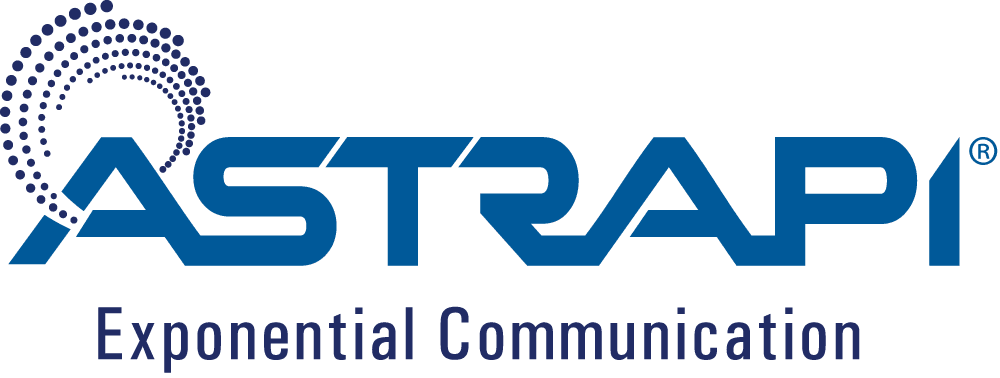The United States Air Force selected Astrapi in an Open Call for Innovative Defense-Related Dual-Purpose Technologies/Solutions addressing Unmanned Aerial Systems (UAS) communications challenges
FOR IMMEDIATE RELEASE
Astrapi Contact: David Shaw
Direct email: [email protected]
Interference Mitigation using Spiral Modulation
Dallas, TX (July 30, 2018)
Astrapi’s Spiral Modulation provides the foundation to dramatically increase the flexibility of symbol waveform design and to use this additional flexibility to address key defense communications challenges. Warfighters are increasingly concerned with the potential of jamming and signal intercept inhibiting mission success. It is widely known that adversaries deploy jammers against GPS, SATCOM, FM, and cellular signals. Astrapi’s spiral modulation technology is resistant to signal interference, while providing improvements to size weight and power (SWaP).
The Air Force is interested in exploring technological areas and solutions that have proven their value in the commercial sector, in order to evaluate whether they have applications to meet the Warfighter’s needs. Astrapi’s Spiral Modulation, driving innovation at the core physical layer of the telecommunications industry, is one such technology.
The novel “special topic” SBIR program was created to explore Innovative Defense-Related Dual-Purpose Technologies that may not be covered by any other specific SBIR topic. This approach enables the Air Force to evaluate innovative, new alternatives for solutions that may fall outside the Air Force’s current fields of focus. This award will drive completion of a feasibility study and prototype validated concepts accelerating historic SBIR Phase I and II schedules.
“We are extremely excited to have been awarded one of the first Air Force Special Topics SBIR Phase I projects, targeted at exploring how best to integrate our innovative technology into the Joint Communications Architecture for Unmanned Systems (JCAUS). Spiral Modulation is extremely novel and therefore generally falls outside of standard defense procurement frameworks. The ‘Special Topics’ framework is perfect for transformative technologies such as ours. Spiral Modulation is a fundamentally new physical layer telecommunications solution with multiple benefits, including higher spectral efficiency, signal interference mitigation, , bandwidth efficiency, and Size, Weight and Power (SWaP) advantage,” said Dr. Jerrold Prothero, Astrapi Founder and CEO. “We have now started the initial testing and optimization in a Software Defined Radio (SDR) platform and are evaluating partners for the next stages of development of this exciting new technology. Our transition to the SDR deployment will in due course provide benefits for a wide variety of dual use communication systems, including Unmanned Aerial Systems (UAS), satellite, defense, mobile, and Internet of Things including Cellular (4G- and emerging 5G-LTE), Wireless Local Area Network (802.11 a/g/n), Digital Audio and Terrestrial Television Broadcasting (DAB, DVB-T), Cable Service (DOCSIS 3.1), and Digital Subscriber Line (VDSL and VDSL2) among others.”
Channel capacity is a critical and limiting problem for any communication system. Astrapi now has multiple patents issued and pending among ten patent families that address how we may improve use of communications spectrum in order to meet growing demand and meet the needs of our Warfighters. Spiral modulation redefines how we look at addressing those challenges through innovation in the wave form design space to address these growing challenges and threat vectors.
ABOUT Astrapi Corporation
Astrapi is the pioneer of spiral-based signal modulation, which opens an unexplored area for innovation at the core of telecommunications. Based on a generalization of Euler’s formula, the foundational mathematics for telecom, Astrapi provides fundamentally new ways to design the symbol waveforms used to encode digital transmissions. By applying new mathematics to signal modulation, Astrapi is able to improve the trade-off between the four fundamental parameters in telecommunications: bandwidth, signal power, data throughput, and error rate. The resulting efficiency translates into higher spectral performance with more bits available at a lower cost.
https://www.astrapi-corp.com
ABOUT the United States Air Force SBIR program
The Small Business Innovation Research (SBIR) program is a highly competitive program that encourages domestic small businesses to engage in Federal Research/Research and Development (R/R&D) that has the potential for commercialization. Through a competitive awards-based program, SBIR enables small businesses to explore their technological potential and provides the incentive to profit from its commercialization. By including qualified small businesses in the nation’s R&D arena, high-tech innovation is stimulated and the United States gains entrepreneurial spirit as it meets its specific research and development needs.
NSF funds research and education in most fields of science and engineering. It does this through grants and cooperative agreements to more than 2,000 colleges, universities, K-12 school systems, businesses, informal science organizations and other research organizations throughout the US. NSF receives approximately 55,000 proposals each year for research, education and training projects, of which approximately 11,000 are funded. In addition, the Foundation receives several thousand applications for graduate and postdoctoral fellowships.
The Small Business Innovation Research (SBIR) program was established by Congress in 1982 to fund research and development (R&D) by small businesses of 500 or fewer employees. Eleven federal agencies participate in the program, including the Department of Defense.
AFRL and AFWERX have partnered to streamline the Small Business Innovation Research process in an attempt to speed up the experience, broaden the pool of potential applicants and decrease bureaucratic overhead. Beginning in SBIR 18.2, the Air Force has begun offering ‘Special’ SBIR topics that are faster, leaner and open to a broader range of innovations.
